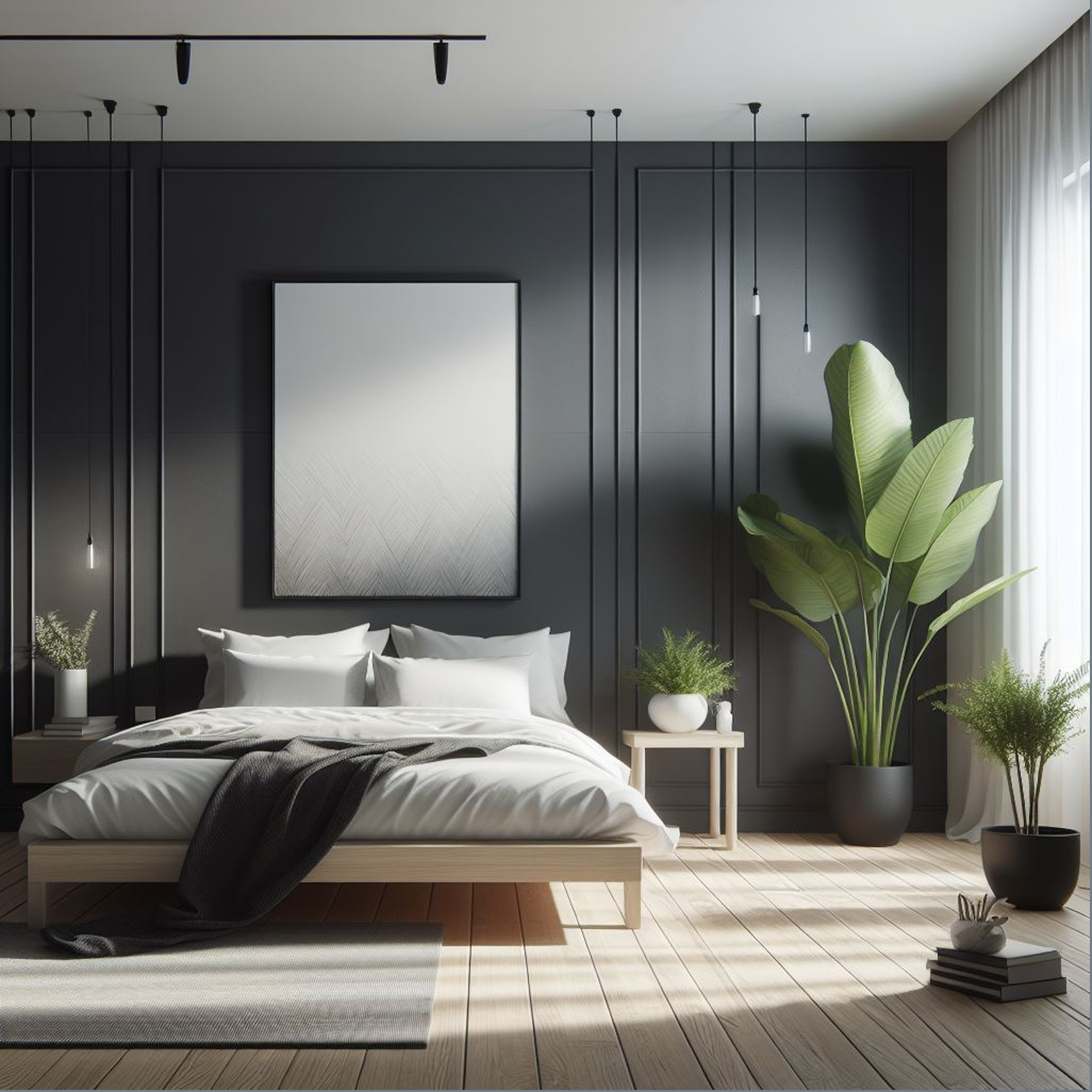
Interior Paint vs. Exterior Paint
You may not be able to tell with your eyes, but there are differences when it comes to interior and exterior paint. Each paint type is formulated specifically for its environment.
12 Differences Between Interior and Exterior Paint
Formulation
Interior paint formulations are tailored to withstand typical indoor conditions, such as temperature fluctuations and humidity levels, without compromising on performance or appearance. They prioritize features like ease of application, smooth finish, and minimal odor. In contrast, exterior paints are engineered to withstand outdoor elements such as UV exposure, moisture, and temperature changes. They require more robust formulations with enhanced durability, adhesion, and weather resistance to maintain their appearance and protective qualities over time.
Durability
Exterior paints are designed to endure harsher conditions than interior paints. They must withstand exposure to rain, sunlight, wind, and other environmental factors without compromising their integrity or appearance. Exterior paints must have greater durability, resilience, and resistance to weathering, fading, cracking, peeling, and blistering compared to interior paints. Interior paints, on the other hand, are subjected to less extreme conditions and may prioritize features like washability, stain resistance, and scuff resistance over long-term.
Resins and Additives
Exterior paints often contain additional resins and additives compared to interior paints to enhance their performance and durability in outdoor environments. These additives may include UV inhibitors, fungicides, algaecides, and elastomeric compounds to provide protection against UV rays, mildew, algae, and cracking. Interior paints may focus more on features like low odor, low VOC content, and ease of cleaning, with fewer additives needed to withstand indoor conditions.
VOC Content
Both interior and exterior paints are available in low-VOC or zero-VOC formulations to minimize environmental impact and indoor air pollution. However, exterior paints may have slightly different VOC requirements due to regulations related to outdoor air quality and emissions. Manufacturers may adjust the VOC content and formulations of exterior paints to comply with these regulations while maintaining optimal performance and durability.
Sheen Levels
Both interior and exterior paints come in various sheen levels, including flat, eggshell, satin, semi-gloss, and high gloss. However, the specific sheen options may vary between interior and exterior paint lines based on their intended use and performance requirements. For example, exterior paints may offer additional sheen options optimized for outdoor applications, such as a satin finish with enhanced UV protection or a high gloss finish for added durability and weather resistance.
Color Retention
Exterior paints are formulated to maintain color vibrancy and resist fading over time, even when exposed to prolonged sunlight and weathering. They often contain UV-resistant pigments and additives that help prevent color fading and maintain the paint's appearance and integrity. Interior paints may also offer good color retention, but they are typically not subjected to the same level of UV exposure and environmental stressors as exterior paints, so their color retention properties may differ.
Application Surfaces
While both interior and exterior paints can be applied to a variety of surfaces such as wood, metal, and drywall, exterior paints are specifically engineered for outdoor substrates like siding, trim, and masonry. They must adhere well to these surfaces and withstand exposure to moisture, temperature fluctuations, and other outdoor conditions. Exterior paints may have different surface preparation and application requirements compared to interior paints to ensure proper adhesion, coverage, and long-term performance on exterior surfaces.
Flexibility
Exterior paints are formulated to be more flexible than interior paints to accommodate the expansion and contraction of exterior surfaces due to temperature changes. This flexibility helps prevent cracking, peeling, and blistering, which are common issues in outdoor environments with fluctuating temperatures. Interior paints may also contain flexible additives to a certain extent, but they do not typically require the same level of flexibility as exterior paints since indoor surfaces are less prone to temperature variations and movement.
Mildew Resistance
Exterior paints often contain additives to inhibit the growth of mildew and mold, which are more prevalent in outdoor environments with higher moisture levels. These additives help protect the paint surface from unsightly mold and mildew growth, which can degrade the paint's appearance and compromise its durability over time. Interior paints may also offer mildew resistance, especially in high-moisture areas like bathrooms and kitchens, but they are not subjected to the same level of moisture and humidity as exterior paints.
UV Protection
Exterior paints typically include UV-resistant additives to protect against sun damage and color fading caused by prolonged exposure to sunlight. These additives help maintain the paint's color vibrancy and integrity over time, even in harsh sunlight and UV-rich environments. Interior paints may also offer some degree of UV protection, but they are not exposed to the same level of UV radiation as exterior paints, so their UV protection properties may differ.
Primer Requirements
Exterior paints may have different primer requirements compared to interior paints. Some exterior paints are self-priming, meaning they contain built-in primers that promote adhesion and seal porous surfaces without the need for a separate primer. However, certain exterior surfaces may still require priming with a dedicated primer to ensure proper adhesion, coverage, and long-term durability. Interior paints may also benefit from priming, especially on new or bare surfaces, but their primer requirements may differ based on the substrate and desired finish.
Environmental Considerations
Exterior paints may have additional environmental considerations compared to interior paints, such as resistance to salt spray in coastal areas or compatibility with specific climate conditions like high humidity or freezing temperatures. Manufacturers may formulate exterior paints with specialized additives and properties to address these environmental challenges and ensure optimal performance and durability in diverse outdoor environments. Interior paints, on the other hand, may focus more on indoor air quality, low odor, and VOC emissions, as they are primarily used in enclosed spaces with limited ventilation.




